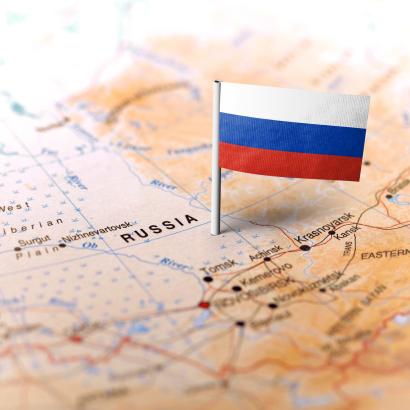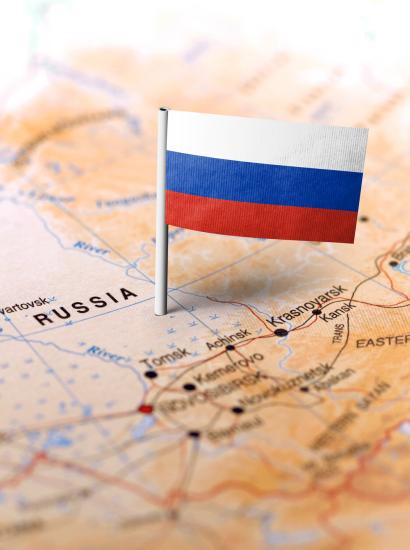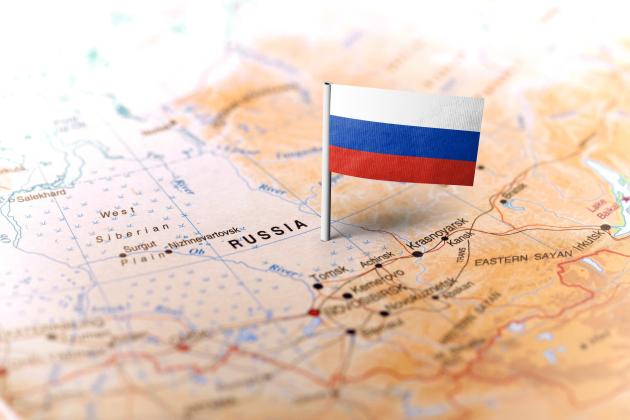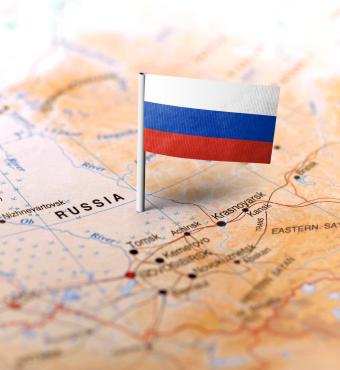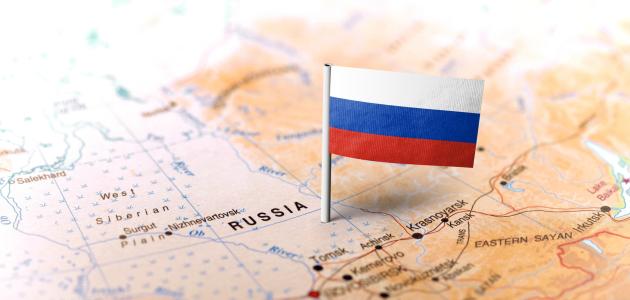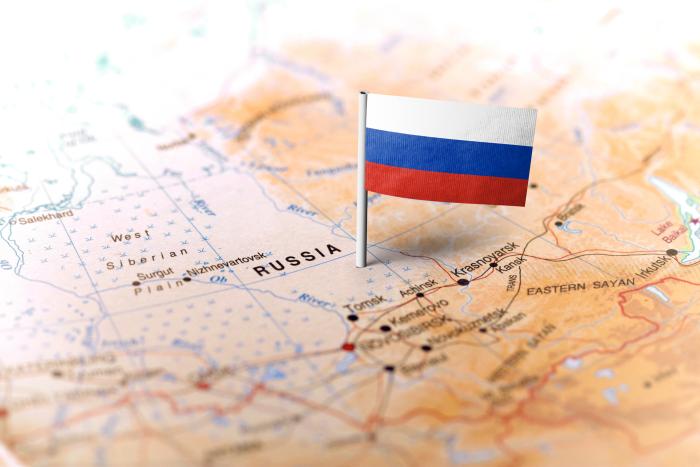Nothing is stranger than the notion, widely held, that Russia is a newcomer to the Middle East. After extending its rule to what is now called southern Ukraine in the late eighteenth century its territories bordered on the vast Ottoman Empire. Conflict with the Ottomans, never dormant, broke out into war in the mid-nineteenth century when the ambition of Russia to act as protector of all Christians in the Holy Land provoked the British and French to rescue the Sultan’s position by sending expeditionary forces to Crimea. The Ottomans took the side of Germany and Austria-Hungary in World War One, and the Russians in turn opened a southern front against them. The October 1917 Revolution shook the kaleidoscope of international relations. For a while the Soviet government in Moscow had little opportunity to interfere in Middle Eastern affairs except in the form of its communist propaganda. But World War Two gave the kaleidoscope another shake by hugely increasing the USSR’s global influence. From the late 1950s, a succession of countries – Egypt, Syria, Iraq and Libya – became Soviet client states. In 1979, Moscow invaded Afghanistan.
Gorbachëv’s perestroika in the late 1980s and the economic depression that afflicted the Russian Federation throughout the 1990s compelled a pause in the exercise of influence in the Middle East. But from the turn of the millennium, as the Russian economy recovered, Vladimir Putin reverted to a foreign policy that sought to revitalize Russia’s activities across the entire region. The Syrian military intervention which started in 2015 was of a piece with this geopolitical strategy.
For Moscow, the Middle East constituted a testing ground for its thinking on foreign policy. Putin became an advocate of ‘multipolarity’ in global politics. The essence of this orientation is the idea that America had lorded it over the world for too long. Russian leaders complained that American power had been uncontested in the last decade of the twentieth century and that the result was chaos and distress in many countries. The Kremlin, apart from objecting to Washington’s alleged goal of continued ‘hegemony’, declared that the West made fundamental mistakes by blundering into the Middle East and toppling regimes in Iraq and Libya. Putin has repeatedly argued that the export of liberal values to the region crushed domestic traditions and destabilised whole societies. This, he maintains, opened the space for jihadi organizations to emerge and challenge national power structures. Russia, by contrast, has prided itself on supporting existing governments and their leaders regardless of whether they are responsible for grossly abusing their own citizens.
It is needless to stress, the Putin administration was not acting in a spirit of altruism by racing to rescue Bashar al-Assad in Syria in 2015. Russia is seizing its chance to fill the vacuum left by US Presidents Obama and Trump. Here the Russian leadership has walked through an open door. In shoring up Syrian authoritarianism, moreover, it is acting to dampen the worldwide movement for democratization. Examples of new democracies are not welcomed by the Kremlin because they could set a precedent for Russia’s electorate to emulate. In the early years of the current century the prospect of a free society on the Russian doorstep was stirred by the ‘color revolutions’ in Georgia and Ukraine, and Putin’s policy was to destabilize democratic administrations by fair means or foul. Usually foul. Both Georgia and Ukraine have experienced invasion by forces of the Russian Federation, and the annexation of Crimea and on-going war in Donbas shows the constancy of Putin’s determination.
This attitude showed the hypocrisy and inconsistency of Russia’s commitment to the legitimacy of existing governments. Borders, territory and the popular will mean nothing to Putin when he sees them as threatening Russian national interests. And whereas his forces have failed to bring Ukraine to its knees and agree to integration with Russia, the military intervention in Syria has kept Assad in power and enabled Putin to consolidate Russia’s presence and influence there. As a result, Russia has established a solid foothold across the Middle East.
Its objectives throughout the entire region are abetted by active diplomacy and a prime objective is to supplant the United States as the Middle East’s greatest external power. This focus involves complex, multi-country operations, and religious fundamentalism is no barrier to the search for friends if the Kremlin perceives a possibility to spread its net of influence. Iran, America’s enemy since 1979, has been courted with assiduity. Saudi Arabia is a close ally of the Americans, but it, too, has received a political salute in Moscow. This dual diplomatic track has had its troubles. In 2016, Russia overstepped the mark by launching air strikes from an Iranian base on jihadi organizations in Iraq; in 2020, Russia strove to upset the Saudi-led OPEC agreement to lower hydrocarbon production as a means of raising export prices on the world market. In both cases Russian activity was adjusted to retain friendly relations. There proved to be limits to Moscow’s power of outreach.
The sheer complexity of the region is a further factor than precludes the pursuit of a uniform policy. The Afghan Taliban are jihadis and yet Russia, hoping to nullify the US influence in Afghanistan, opened talks with their leaders in Doha. Turkey and Assad’s Syria have conflicting aims and have indeed clashed, and yet Putin has given precedence to a positive relationship with Turkish President Erdoğan, while nonetheless propping up Assad. Again, the bid to undermine US influence is uppermost in Putin’s mind. In the same fashion, Moscow has supplied military aid to Libyan rebel general Khalifa Haftar who fights to crush the UN-recognized Government of National Accord.
On the one hand, Russia has increased its impact on the Middle East; on the other, its interventions and initiatives have sucked it into dangerous international entanglements. (Only America’s self-chosen semi-absence from the fray has made the Russian difficulty less a matter for comment in Russia and elsewhere than it deserves.) The Kremlin cannot afford to ignore the dangers to the Russian national interest of what we might call its forward policy. The collapse of hydrocarbon prices since mid-2014 places severe constraints on what Moscow can achieve apart from contributing its military forces to local conflicts – it is hard to imagine, for example, Russia being able to foot the bill for Syria’s economic reconstruction when the dust of civil war finally settles. And although Putin’s assertive stance in world politics is hugely popular with the Russian public, he has to appreciate – and he does – the need to avoid news of body bags of dead Russian servicemen being airlifted home from foreign conflicts. Putin does not want to have to deal with mothers who have lost their sons in needless wars.
Russian public opinion exerts a real pressure on the Kremlin administration. Presidential and, to a large extent, Duma elections can be manipulated and emasculated. But in years when the standard of living of most Russians has tumbled, there are limits on public patience. In the summer 2018, the pensioners’ protests caused serious disturbances. Putin has used his record of international impact as a way of deflecting attention from his poor economic management since 2000: the Russian economy is still as undiversified and as reliant on its export trade in raw materials as it was when he came to supreme power. This has the inevitable corollary that his political health depends crucially on uninterrupted success – and on the Russian public’s perception of him as being truly successful and beneficial to the country.
In the Middle East, Russia’s fortunes could change dramatically. Geopolitics are in flux. Russia has bragged of its alliance with China as evidence of its achievement of a ‘multipower world’. But the Chinese embrace is problematic for the Kremlin as Xi Jinping pushes ahead with the Belt and Road Initiative to link China and Europe. Such an economic connection involves the goal of expanding Beijing’s influence throughout the southern tier of countries in the former Soviet Union. Russian politicians since Boris Yeltsin have regarded ex-Soviet Central Asia and the South Caucasus as well within Russia’s exclusive zone of influence. What is more, these are territories which abut the Middle East. Although the Putin administration never comments adversely on its Chinese ally, there are deep concerns about China’s objectives as a rising superpower with an economy that dwarfs the Russian one. Russia’s newly regained international power and status are less secure that is generally supposed at home and abroad.
Much will depend on how the United States chooses to proceed in this fluid situation. Under Presidents Obama and Trump, there have been uncertainties about American policy on the Middle East. Generally, the trend has been towards military withdrawal, but America’s regional prospectus has yet to be disclosed. It clearly behoves the next administration, whether Donald Trump or Joe Biden secures victory in the 2020 election, to clarify its intentions and to show that it means to carry them out. What would also be helpful is a statement of Washington’s ‘red lines’ – there is an urgent need for an end to ambiguity about what the US leadership is willing to tolerate before military, diplomatic or economic sanctions are applied.
On Russia, clarification of American purposes is still more overdue. A historical comparison is useful here. When President Reagan and Secretary of State Shultz talked to Gorbachëv, it was the norm for the broad contours of agreements to be made public. This transparency enhanced public approval of the decisions. Since 2016, however, there has been a drastic absence of transparency, and sometimes the Russian administration has been more communicative than the American – and it is hardly sensible to depend on information supplied mainly by Foreign Affairs Minister Sergei Lavrov. At the same time, Russia’s interference in US politics has been constant. While President Trump has claimed that he and Putin have a relationship beneficial to both countries, Moscow’s mischief on American soil has yet to be eliminated.
To be sure, America lacks the capacity for symmetrical retaliation simply because in Russia, unlike the United States, the result of a presidential election is known in advance and immune to external influence. US economic sanctions have done less damage to Russia than was widely expected, and the American reaction to Russian political interference has as yet fallen short of delivering decisive counter-blows. The instruments of IT power are always available. Above all, the US needs to up its game in deploying the inestimable advantage of its ‘soft power’ in convincing the Russian people that America’s problems are not with them but with the political and business elite that rules over them. And rules over them to their country’s grave detriment. The game is on. Or it should be.








